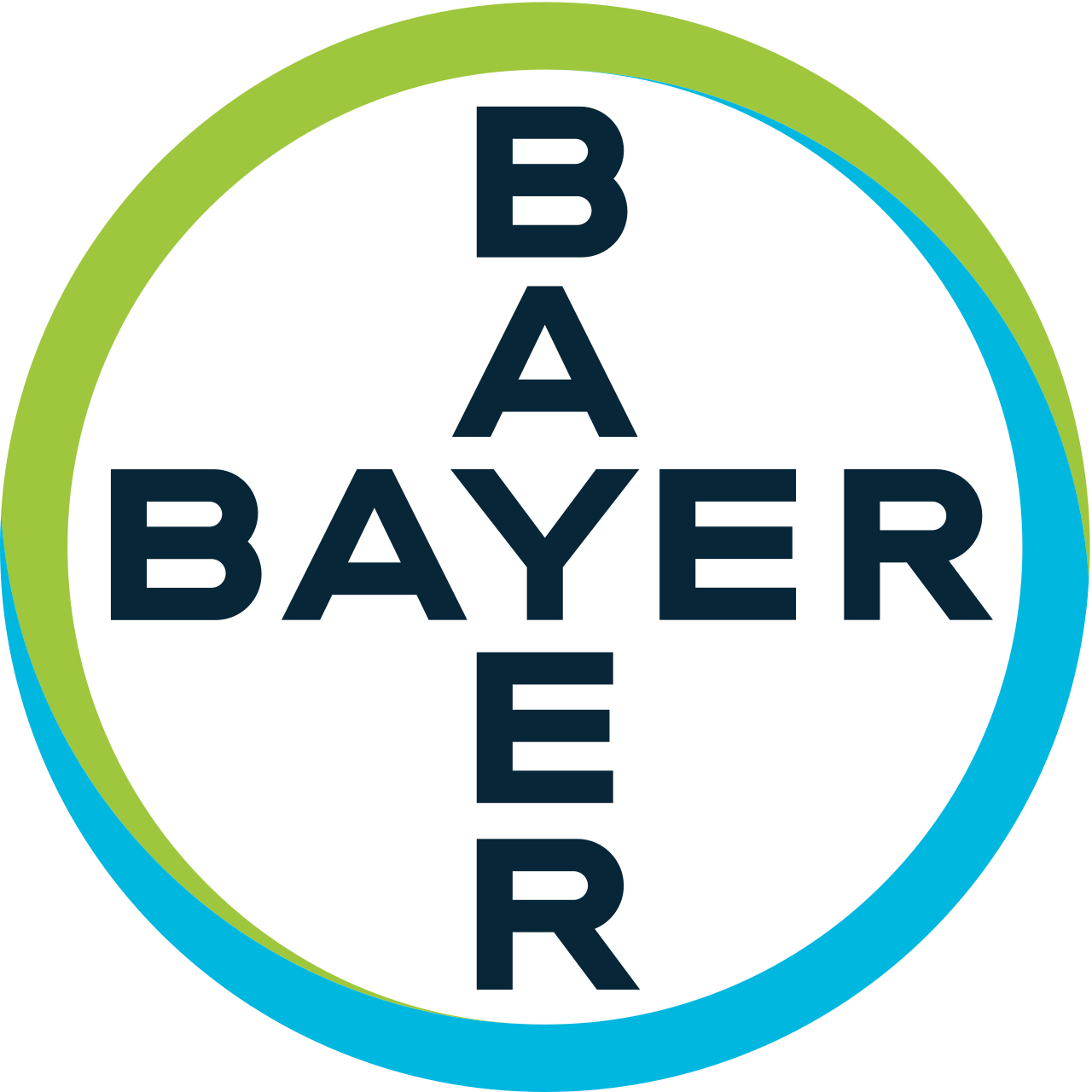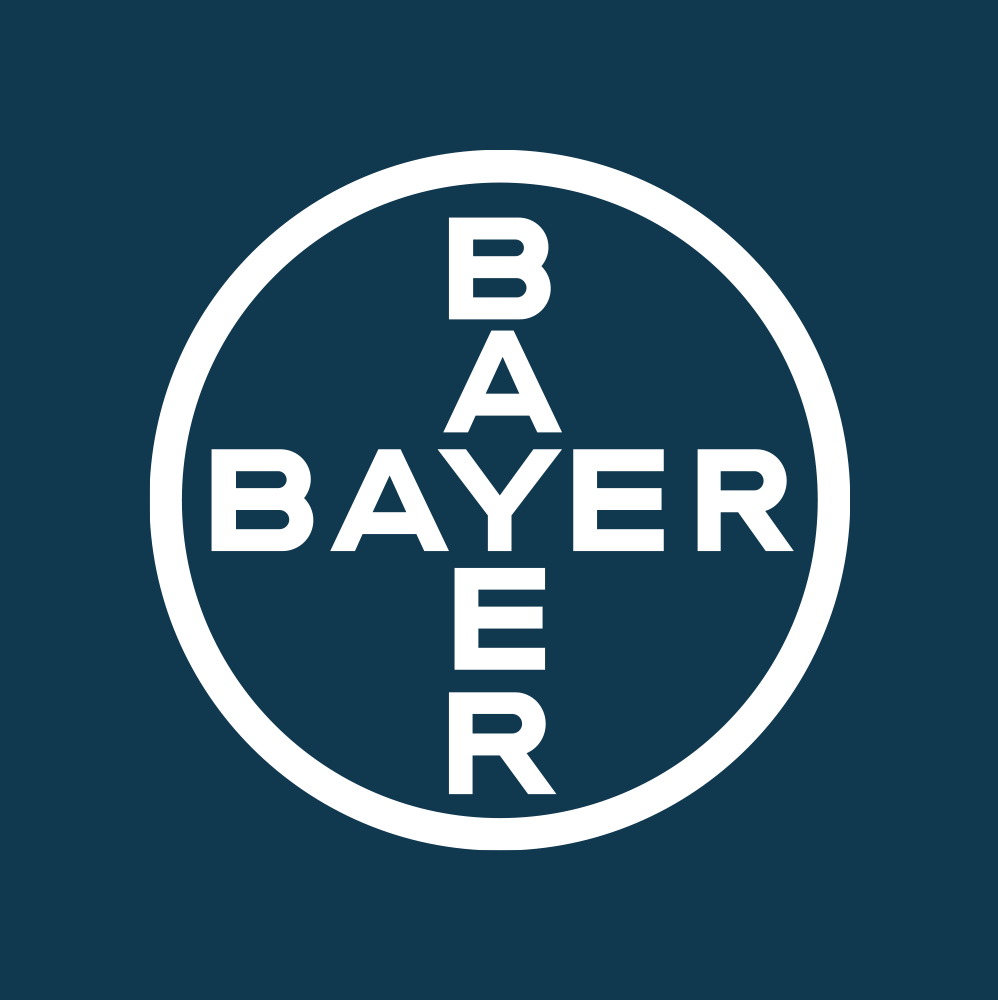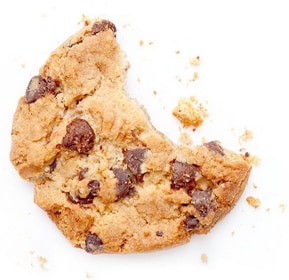Photon counting technology and the future of computed tomography
Photon counting technology and the future of computed tomography
Photon-counting CT is an emerging technology with the potential to dramatically change clinical CT using new energy-resolving x-ray detectors, with...
Read More
Durations: 53:37
About this webinar:
Photon-counting CT is an emerging technology with the potential to dramatically change clinical CT using new energy-resolving x-ray detectors, with mechanisms that differ substantially from those of conventional energy-integrating detectors.
Photon-counting CT detectors count the number of incoming photons and measure photon energy. It can reduce radiation exposure, reconstruct images at a higher resolution, correct beam-hardening artifacts, optimize the use of contrast agents, and create opportunities for quantitative imaging relative to current CT technology.
In this webinar, the speakers will explain the technical principles of photon-counting CT including the use of contrast media.
PP-ULT-ALL-0229
PP-ULT-SE-0002-1
Accordion header
1. W. Kalender, W. Seissler, E. Klotz, P. Vock. Radiology, 176 (1990), pp. 181-183.
2. C.H. McCollough, F.E. Zink. Med Phys, 26 (1999), pp. 2223-2230.
3. K. Klingenbeck-Regn, S. Schaller, T. Flohr, B. Ohnesorge, A.F. Kopp, U. Baum. Eur J Radiol, 31 (1999), pp. 110-124.
4. S. Mori, T. Obata, N. Nakajima, N. Ichihara, M. Endo. AJNR Am J Neuroradiol, 26 (10) (2005), pp. 2536-2541.
5. T.G. Flohr, C.H. McCollough, H. Bruder, M. Petersilka, K. Gruber, C. Süß, et al. Eur Radiol, 16 (2006), pp. 256-268.
6. T.E. Vanhecke, R.D. Madder, J.E. Weber, et al. Circ Cardiovasc Imaging., 4 (5) (2011), pp. 490-497.
7. S.M. Shanbhag, J.L. Schuzer, C. Steveson, S. Rollison, K.C. Bronson, M.S. Stagliano, et al. J Comput Assist Tomogr, 43 (5) (2019), pp. 805-810.
8. X. Duan, J. Wang, S. Leng, et al. AJR Am J Roentgenol, 201 (4) (2013 Oct), pp. W626-W632.
9. G.M. Lu, Y. Zhao, L.J. Zhang, U.J. Schoepf. AJR Am J Roentgenol, 199 (5 Suppl) (2012), pp. S40-S53.
10. D. Marin, D.T. Boll, A. Mileto, R.C. Nelson. Radiology, 271 (2) (2014), pp. 327-342.
11. E.G. Odisio, M.T. Truong, C. Duran, P.M. de Groot, M.C. Godoy. Radiol Clin North Am, 56 (4) (2018), pp. 535-548.
12. M.H. Albrecht, C.N. De Cecco, U.J. Schoepf, et al. Eur J Radiol, 105 (2018), pp. 110-118.
13. D. De Santis, M. Eid, C.N. De Cecco, et al. Radiol Clin North Am, 56 (4) (2018), pp. 521-534.
14. P. Rajiah, M. Sundaram, N. Subhas. AJR Am J Roentgenol, 213 (3) (2019), pp. 493-505.
15. M.J. Siegel, J.C. Ramirez-Giraldo. Radiology, 291 (2) (2019), pp. 286-297.
16. Johnson TRC, Krauß B, Sedlmair M, et al. (2007). Material differentiation by dual-energy CT: initial experience. Eur Radiol 2007; 17(6):1510-7.
17. D. Zhang, X. Li, B. Liu. Med Phys, 38 (3) (2011), pp. 1178-1188.
18. N. Rassouli, M. Etesami, A. Dhanantwari, P. Rajiah. Detector-based spectral CT with a novel dual-layer technology: principles and applications. Insights Imaging, 8 (6) (2017), pp. 589-598. CrossRefView Record in ScopusGoogle Scholar.
19. S. Feuerlein, E. Roessl, R. Proksa, et al. Multienergy photon-counting K-edge imaging: potential for improved luminal depiction in vascular imaging. Radiology, 249 (3) (2008), pp. 1010-1016. CrossRefView Record in ScopusGoogle Scholar.
20. K. Taguchi, J.S. Iwanczyk. Vision 20/20: Single photon-counting x-ray detectors in medical imaging. Med Phys, 40 (10) (2013), Article 100901. CrossRefView Record in ScopusGoogle Scholar.
21. K. Taguchi. Energy-sensitive photon-counting detector-based X-ray computed tomography. Radiol Phys Technol, 10 (1) (2017), pp. 8-22. CrossRefView Record in ScopusGoogle Scholar.
22. M.J. Willemink, M. Persson, A. Pourmorteza, N.J. Pelc, D. Fleischmann. Photon-counting CT: Technical Principles and Clinical Prospects. Radiology, 289 (2) (2018), pp. 293-312. CrossRefView Record in ScopusGoogle Scholar.
23. S. Leng, M. Bruesewitz, S. Tao, et al. Photon-counting Detector CT: System Design and Clinical Applications of an Emerging Technology. Radiographics, 39 (3) (2019), pp. 729-743. CrossRefView Record in ScopusGoogle Scholar.
24. S. Kappler, D. Niederlöhner, K. Stierstorfer, T. Flohr. Contrast-enhancement, image noise and dual-energy simulations for quantum-counting clinical CT. Proceedings of the SPIE Medical Imaging Conference, 7622 (2010), p. 76223H. CrossRefView Record in ScopusGoogle Scholar.
25. F.A. Kopp, H. Daerr, S. Si-Mohamed, et al. Evaluation of a pre-clinical photon-counting CT prototype for pulmonary imaging. Sci Rep, 8 (1) (2018), p. 17386. View Record in ScopusGoogle Scholar.
26. Bratke G, Hickethier T, Bar-Ness D, et al. Spectral Photon-Counting Computed Tomography for Coronary Stent Imaging: Evaluation of the Potential Clinical. Impact for the Delineation of In-Stent Restenosis. Invest Radiol 2019 Sep 12. doi: 10.1097/RLI.0000000000000610. [Epub ahead of print]. Google Scholar.
27. I. Riederer, D. Bar-Ness, M.A. Kimmz. Liquid embolics agents in spectral x-ray photon-counting computed tomography using tantalum K-edge imaging. Sci Rep, 9 (2019), p. 5268. View Record in ScopusGoogle Scholar.
28. D.P. Cormode, S. Si-Mohamed, D. Bar-Ness, et al. Multicolor spectral photon-counting computed tomography: in vivo dual contrast imaging with a high count rate scanner. Sci Rep, 7 (1) (2017), p. 4784. View Record in ScopusGoogle Scholar.
29. J. Dangelmaier, D. Bar-Ness, H. Daerr, et al. Experimental feasibility of spectral photon-counting computed tomography with two contrast agents for the detection of endoleaks following endovascular aortic repair. Eur Radiol, 28 (8) (2018), pp. 3318-3325. CrossRefView Record in ScopusGoogle Scholar.
30. D. Muenzel, D. Bar-Ness, E. Roessl, et al. Spectral Photon-counting CT: Initial Experience with Dual-Contrast Agent K-Edge Colonography. Radiology, 283 (3) (2017), pp. 723-728. CrossRefView Record in ScopusGoogle Scholar.
31. S. Si-Mohamed, D. Bar-Ness, M. Sigovan, et al. Multicolour imaging with spectral photon-counting CT: a phantom study. Eur Rad Experimental, 2 (2018), p. 34. View Record in ScopusGoogle Scholar.
32. S. Si-Mohamed, V. Tatard-Leitman, A. Laugerette, et al. Spectral Photon-Counting Computed Tomography (SPCCT): in-vivo single-acquisition multi-phase liver imaging with a dual contrast agent protocol. Sci Rep, 9 (1) (2019), p. 8458. View Record in ScopusGoogle Scholar.
33. I. Riederer, S. Si-Mohamed, S. Ehn, et al. Differentiation between blood and iodine in a bovine brain – Initial experience with spectral photon-counting computed tomography (SPCCT). PLoS ONE, 14 (2) (2019), Article e0212679. CrossRefView Record in ScopusGoogle Scholar.
34. Kappler S, Hannemann T, Kraft E, et al. First results from a hybrid prototype CT scanner for exploring benefits of quantum-counting in clinical CT. Imaging 2012: Physics of Medical Imaging (San Diego, CA: International Society for Optics and Photonics) p 83130X. Google Scholar.
35. Kappler S, Henning A, Krauss B, et al. Multi-energy performance of a research prototype CT scanner with small-pixel counting detector. Medical Imaging 2013: Physics of Medical Imaging (Lake Buena Vista, FL: International Society for Optics and Photonics) p. 86680O. Google Scholar.
36. Kappler S, Henning A, Kreisler B, et al. Photon-counting CT at elevated x-ray tube currents: contrast stability, image noise and multi-energy performance. Medical Imaging 2014: Physics of Medical Imaging (San Diego, CA: International Society for Optics and Photonics) p. 90331C. Google Scholar.
37. Z. Yu, S. Leng, S.M. Jorgensen, et al. Evaluation of conventional imaging performance in a research CT system with a photon-counting detector array. Phys Med Biol, 61 (2016), pp. 1572-1595.CrossRefView Record in ScopusGoogle Scholar.
38. R. Gutjahr, A.F. Halaweish, Z. Yu, et al. Human Imaging With Photon-counting-Based Computed Tomography at Clinical Dose Levels: Contrast-to-Noise Ratio and Cadaver Studies. Invest Radiol, 51 (7) (2016), pp. 421-429. View Record in ScopusGoogle Scholar.
39. A. Pourmorteza, R. Symons, V. Sandfort, et al. Abdominal Imaging with contrast-enhanced photon-counting CT: first human experience. Radiology, 279 (1) (2016), pp. 239-245. CrossRefView Record in ScopusGoogle Scholar.
40. A. Pourmorteza, R. Symons, D.S. Reich, M. Bagheri, T.E. Cork, S. Kappler, et al. Photon-Counting CT of the Brain. In Vivo Human Results and Image-Quality Assessment. AJNR Am J Neuroradiol, 38 (12) (2017), pp. 2257-2263. View Record in ScopusGoogle Scholar.
41. Z. Yu, S. Leng, S. Kappler, et al. Noise performance of low-dose CT_ comparison between an energy integrating detector and a photon-counting detector using a whole-body research photon-counting CT scanner. J Med Imaging, 3 (4) (2016), Article 043503. View Record in ScopusGoogle Scholar.
42. R. Symons, T. Cork, P. Sahbaee, et al. Low-dose lung cancer screening with photon-counting CT: a feasibility study. Phys Med Biol, 62 (1) (2017), pp. 202-213. CrossRefView Record in ScopusGoogle Scholar.
43. R. Symons, A. Pourmorteza, V. Sandfort, et al. Feasibility of Dose-reduced Chest CT with Photon-counting Detectors: Initial Results in Humans. Radiology, 285 (3) (2017), pp. 980-989. CrossRefView Record in ScopusGoogle Scholar.
44. R. Symons, V. Sandfort, M. Mallek, S. Ulzheimer, A. Pourmorteza. Coronary artery calcium scoring with photon-counting CT: first in vivo human experience. Int J Cardiovasc Imaging, 35 (4) (2019), pp. 733-739. CrossRefView Record in ScopusGoogle Scholar.
45. S. Leng, K. Rajendran, H. Gong, et al. 150-μm Spatial Resolution Using Photon-Counting Detector Computed Tomography Technology: Technical Performance and First Patient Images. Invest Radiol, 53 (11) (2018), pp. 655-662. CrossRefView Record in ScopusGoogle Scholarz.
46. R. Symons, Y. de Bruecker, J. Roosen, et al. Quarter-millimeter spectral coronary stent imaging with photon-counting CT: Initial experience. J Cardiovascul Comp Tomogr, 12 (2018), pp. 509-515. ArticleDownload PDFView Record in ScopusGoogle Scholar.
47. J. von Spiczak, M. Mannil, B. Peters, et al. Photon-counting computed Tomography with dedicated sharp convolution kernels – tapping the potential of a new technology for stent imaging. Invest Radiol, 53 (8) (2018), pp. 486-494. CrossRefView Record in ScopusGoogle Scholar.
48. A. Pourmorteza, R. Symons, A. Henning, S. Ulzheimer, D.A. Bluemke. Dose Efficiency of Quarter-Millimeter Photon-Counting Computed Tomography: First-in-Human Results. Invest Radiol, 53 (6) (2018), pp. 365-372. CrossRefView Record in ScopusGoogle Scholar.
49. W. Zhou, J.I. Lane, M.L. Carlson, et al. Comparison of a Photon-Counting-Detector CT with an Energy-Integrating-Detector CT for Temporal Bone Imaging: A Cadaveric Study. AJNR Am J Neuroradiol, 39 (9) (2018), pp. 1733-1738. CrossRefView Record in ScopusGoogle Scholar.
50. D.J. Bartlett, W.C. Koo, B.J. Bartholmai, et al. High-Resolution Chest Computed Tomography Imaging of the Lungs: Impact of 1024 Matrix Reconstruction and Photon-Counting Detector Computed Tomography. Invest Radiol, 54 (3) (2019), pp. 129-137. CrossRefView Record in ScopusGoogle Scholar.
51. Z. Li, S. Leng, L. Yu, et al. An effective noise reduction method for multi-energy CT images that exploit spatio-spectral features. Med Phys, 44 (5) (2017), pp. 1610-1623. CrossRefView Record in ScopusGoogle Scholar.
52. A.P. Harrison, Z. Xu, A. Pourmorteza, D.A. Bluemke, D.J. Mollura. A multichannel block-matching denoising algorithm for spectral photon-counting CT images. Med Phys, 44 (6) (2017), pp. 2447-2452. CrossRefView Record in ScopusGoogle Scholar.
53. Rajendran K, Tao S, Abdurakhimova D, Leng S, McCollough C. Ultra-high resolution photon-counting detector CT reconstruction using spectral prior image constrained compressed-sensing (UHR-SPICCS). Proc SPIE Int Soc Opt Eng; 2018 Mar;10573. pii: 1057318. doi: 10.1117/12.2294628. Google Scholar.
54. S1 Leng, W. Zhou, Z. Yu, et al. Spectral performance of a whole-body research photon-counting detector CT: quantitative accuracy in derived image sets. Phys Med Biol, 62 (17) (2017), pp. 7216-7232. CrossRefView Record in ScopusGoogle Scholar.
55. R. Symons, D.S. Reich, M. Bagheri, et al. Photon-Counting Computed Tomography for Vascular Imaging of the Head and Neck: First In Vivo Human Results. Invest Radiol, 53 (3) (2018), pp. 135-142. CrossRefView Record in ScopusGoogle Scholar.
56. K.L. Grant, T.G. Flohr, B. Krauss, et al. Assessment of an Advanced Image-Based Technique to Calculate Virtual Monoenergetic Computed Tomographic Images From a Dual-Energy Examination to Improve Contrast-To-Noise Ratio in Examinations Using Iodinated Contrast Media. Invest Radiol, 49 (9) (2014), pp. 586-592. View Record in ScopusGoogle Scholar.
57. Zhou W, Abdurakhimova D, Bruesewitz M, et al. Impact of photon-counting detector technology on kV selection and diagnostic workflow in CT. Proc SPIE Int Soc Opt Eng. 201 Mar;10573. pii: 105731C doi: 10.1117/12.2294952. Google Scholar.
58. R. Gutjahr, C. Polster, A. Henning, S. Kappler, S. Leng, C.H. McCollough, et al. Dual-energy CT Kidney Stone Differentiation in Photon-counting Computed Tomography. Proc SPIE Int Soc Opt Eng, 10132 (2017). Google Scholar.
59. A. Ferrero, R. Gutjahr, A.F. Halaweish, S. Leng, C.H. McCollough. Characterization of Urinary Stone Composition by Use of Whole-body, Photon-counting Detector CT. Acad Radiol, 25 (10) (2018), pp. 1270-1276. ArticleDownload PDFView Record in ScopusGoogle Scholar.
60. R.P. Marcus, J.G. Fletcher, A. Ferrero, et al. Detection and Characterization of Renal Stones by Using Photon-Counting-based CT. Radiology, 289 (2) (2018), pp. 436-442. CrossRefView Record in ScopusGoogle Scholar.
61. R. Symons, T.E. Cork, M.N. Lakshmanan, et al. Dual-contrast agent photon-counting computed tomography of the heart: initial experience. Int J Cardiovasc Imaging, 33 (2017), pp. 1253-1261. CrossRefView Record in ScopusGoogle Scholar.
62. R. Symons, B. Krauss, P. Sahbaee, et al. Photon-counting CT for simultaneous imaging of multiple contrast agents in the abdomen: An in vivo study. Med Phys, 44 (10) (2017), pp. 5120-5127. CrossRefView Record in ScopusGoogle Scholar.
63. S. Tao, K. Rajendran, C.H. McCollough, S. Leng. Material decomposition with prior knowledge aware iterative denoising (MD-PKAID). Phys Med Biol, 63 (19) (2018), Article 195003. CrossRefView Record in ScopusGoogle Scholar.
64. M. Persson, B. Huber, S. Karlsson, et al. Energy-resolved CT imaging with a photon-counting silicon-strip detector. Phys Med Biol, 59 (2014), pp. 6709-6727. CrossRefView Record in ScopusGoogle Scholar.
65. H.M. Cho, W.C. Barber, H. Ding, J.S. Iwanczyk, S. Molloi. Characteristic performance evaluation of a photon counting Si strip detector for low dose spectral breast CT imaging. Med Phys, 41 (9) (2014), Article 091903. CrossRefView Record in ScopusGoogle Scholar.
66. Grönberg F, Lundberg J, Sjölin M, et al. Feasibility of unconstrained three-material decomposition: imaging an excised human heart using a prototype silicon photon-counting CT detector. Eur Radiol 2020 Jun 25. doi: 10.1007/s00330-020-07017-y. Online ahead of print. Google Scholar.
67. J. da Silva, F. Grönberg, B. Cederström, et al. Resolution characterization of a silicon-based, photon-counting computed tomography prototype capable of patient scanning. J Med Imaging (Bellingham)., 6 (4) (2019), Article 043502. View Record in ScopusGoogle Scholar.
68. Panta, RK, Butler APH, de Ruiter NJA, et al. First human imaging with MARS photon-counting CT. 2018 IEEE Nuclear Science Symposium and Medical Imaging Conference Proceedings (NSS/MIC). Google Scholar.
69. T.G. Flohr, K. Stierstorfer, C. Süß, et al. Novel ultrahigh resolution data acquisition and image reconstruction for multi- detector row CT. Med Phys, 34 (5) (2007), pp. 1712-1723. CrossRefView Record in ScopusGoogle Scholar.
70. S. Kappler, D. Niederlöhner, S. Wirth, K. Stierstorfer. A full-system simulation chain for computed tomography scanners. IEEE, Orlando, FL (2009), pp. 3433-3436, 10.1109/NSSMIC.2009.5401779. CrossRefView Record in ScopusGoogle Scholar.
71. K. Taguchi, C. Polster, O. Lee, K. Stierstorfer, S. Kappler. Spatio-energetic cross talk in photon counting detectors: Detector model and correlated Poisson data generator. Med Phys, 43 (12) (2016), pp. 6386-6404.
72. J. Cammin, S. Kappler, T. Weidinger, K. Taguchi. Evaluation of models of spectral distortions in photon-counting detectors for computed tomography. J Med Imaging, 3 (2) (2016), Article 023503.
73. K. Stierstorfer. Modeling the frequency-dependent detective quantum efficiency of photon-counting x-ray detectors. Med Phys, 45 (2018), pp. 156-166. CrossRefView Record in ScopusGoogle Scholar.
74. K. Stierstorfer, M. Hupfer, N. Köster. Modeling the DQE(f) of photon-counting detectors: impact of the pixel sensitivity profile. Phys Med Biol, 64 (2019), Article 105008.
Ultravist® 150, 240, 300, 370 mg I/ml injektions-/infusionsvätska, lösning (Rx V08AB05; EF). Indikationer: Endast avsett för diagnostik. Urografi. Angiografi på såväl artär- som vensida. Digital subtraktionsangiografi. Kontrastförstärkning vid datortomografi. Artrografi. Funktionskontroll av dialysshunt. Dosering: Beror på ålder, vikt, undersökningens art och den använda tekniken. Dosen måste vara så låg som möjligt till patienter som lider av uttalad njurinsufficiens, kardiovaskulär insufficens och till patienter med dåligt allmäntillstånd. Försiktighet bör iakttas hos små barn (under 1 år), som löper större risk för störningar av elektrolybalansen och hemodynamiska obalanser. Äldre: Dosjustering är inte nödvändig. Kontraindikationer: Överkänslighet mot den aktiva substansen eller mot något hjälpämne. Det finns inga absoluta kontraindikationer vid användandet av Ultravist®. Varningar: Mediciner och utrustning för akutbehandling av kontrastmedelsreaktioner skall alltid hållas i beredskap. Hos patienter med dåligt allmäntillstånd bör undersökningsbehovet övervägas extra noggrant. Försiktighet rekommenderas till patienter med lungemfysem eller mångårig diabetes mellitus. Hydrering: Adekvat hydreringsstatus måste garanteras i samband med intravaskulär administrering av Ultravist®. Detta berör särskilt utsatta patienter med exempelvis multipelt myelom, diabetes mellitus, polyuri, oliguri, hyperurikemi samt nyfödda, spädbarn, barn och äldre patienter. Biverkningar: Överkänslighetsreaktioner. Risken för överkänslighetsreaktioner är högre vid tidigare reaktion mot kontrastmedel och tidigare bronkialastma eller andra allergiska åkommor. Allergiliknande reaktioner kan uppträda. De vanligast observerade biverkningarna är huvudvärk, illamående och vasodilatation. De allvarligaste biverkningarna är anafylaktoid chock, andningsuppehåll, bronkospasm, larynxödem, farynxödem, astma, arytmi, hjärtstillestånd och pulmonellt ödem. De flesta av dessa reaktioner uppträder inom 30 minuter efter administrering. Fördröjda reaktioner (efter timmar till dagar) kan uppträda. Störningar i tyreoideafunktionen kan förekomma. Hos neonatala, särskilt för tidigt födda spädbarn, som har blivit exponerade för Ultravist®, antingen via modern under graviditeten eller under den neonatala perioden, bör tyroidfunktionen monitoreras. Akut njurskada (AKI), i form av övergående nedsättning av njurfunktionen kan uppträda efter intravaskulär administrering av Ultravist®. Interaktioner: Biguanider (metformin): Hos patienter med akut njursvikt eller allvarlig kronisk njursjukdom kan eliminationen av biguanid reduceras, vilket leder till ackumulering och utveckling av mjölksyreacidos. Hälso- och sjukvårdspersonal uppmanas att rapportera misstänkt biverkning till Läkemedelsverket. Radioaktiva isotoper: I samband med diagnos och behandling av sjukdomar i tyreoidea med tyreotropiskt radioaktiva isotoper kan upptaget av de radioaktiva isotoperna hämmas i flera veckor efter administrering med Ultravist®. Farmakokinetik: Iopromid distribueras mycket snabbt extracellulärt efter intravaskulär administrering. Plasmaproteinbindningsgraden är ca 1 %. Djurstudier tyder på att iopromid inte passerar en intakt blod-hjärnbarriär, men att en mindre mängd kan passera placenta. Metabolism: Inga metaboliter har påvisats. Vid rekommenderade doser elimineras iopromid nästan uteslutande genom glomerulär filtration. Innehavare av godkännande för försäljning: Bayer AB, Box 606, SE-169 26 Solna. Tlf. +46 8-580 223 00. För ytterligare information, pris samt förskrivning, vänligen läs produktresumé på www.fass.se. Datum för översyn av produktresumén: 2021-09-02.
PP-ULT-SE-0006-1





